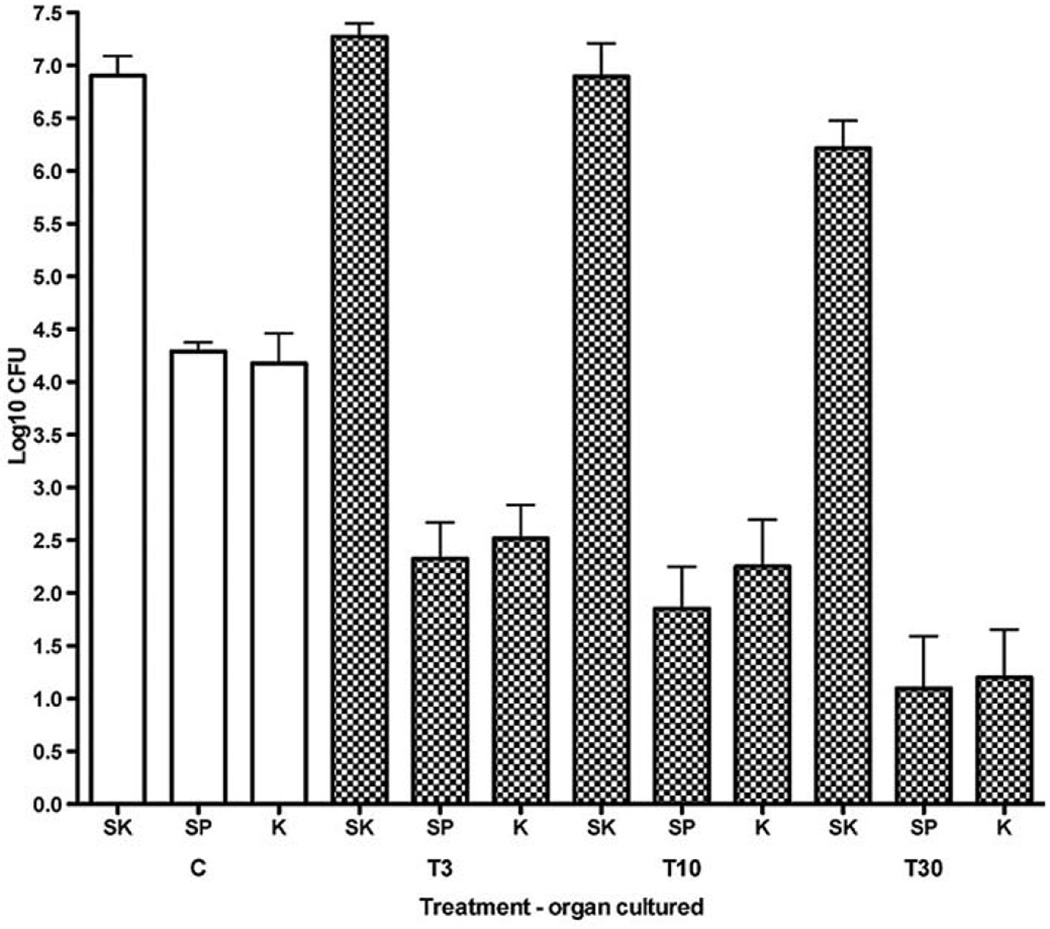Figure 1.
Effect of thioridazine treatment on dissemination of bacteria to spleen and kidney after epicutaneous application of S. aureus onto the flank skin of mice. Values represent log10 CFU per ml (mean±SE) in skin (SK), spleen (SP), and kidney (K) at 24 h after inoculation onto flank skin of 107 CFU of S. aureus (ATCC 25923). Open bars represent control animals (C), and checked bars represent animals treated with intraperitoneal injections of thioridazine at the indicated doses at 24 and one hour before inoculation with bacteria (for example, T3=doses of 3 mg/kg). Note that numbers of CFU in the skin were not significantly affected by thioridazine treatment. However, CFU in spleen and kidney were significantly reduced in most cases compared to those from untreated animals (p-values by ANOVA and Bonferroni’s tests were as follows: T30-SP p<0.001; T30-KD p<0.001; T10-SP p<0.01; T10-KD p<0.05; T3-SP p<0.01; T3-KD p>0.05). Therefore, thioridazine treatment suppressed dissemination to distant organs, but did not reduce bacterial numbers in the local skin infections.

